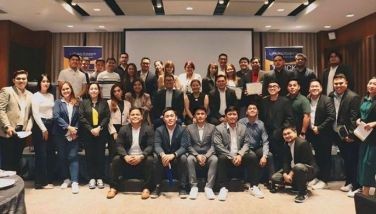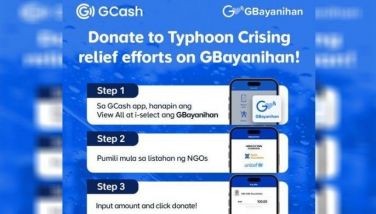Apnea: The sleep monster
July 25, 2006 | 12:00am
 Very recently, I got a text message from my friend Marjorie Barretto asking for prayers for the emergency surgery or her three-year-old son Leon. He had been diagnosed to have sleep apnea, a condition that is rare especially in children. It is also known as obstructive sleep apnea syndrome (OSAS).
Very recently, I got a text message from my friend Marjorie Barretto asking for prayers for the emergency surgery or her three-year-old son Leon. He had been diagnosed to have sleep apnea, a condition that is rare especially in children. It is also known as obstructive sleep apnea syndrome (OSAS).
As it turns out, Leon has had sleep apnea for a year already, but it was not detected because his parents told their doctor only one side of the story regarding his condition. Because he had incurable colds, was irritable, and had trouble breathing during the day, he was treated for asthma. It was only two days before the surgery that Marjorie and her husband Dennis Padilla told their doctor about Leon’s nighttime sleeping pattern because they were very disturbed about his continuous loud snoring, episodes of not breathing for at least 10 seconds to as long as 22 seconds, restless 14-hour sleeping patterns, and hand motions as if Leon was drowning. Because of their observations, Marj and Dennis were encouraged by their pediatrician Dr. Joseph Regalado to seek the expert advice of head and neck doctor Dr. Michael Sarte (635-6789 local 6236) of Medical City’s Sleep Laboratory.
Dr. Sarte extracted two golf-sized masses from Leon’s throat, which obstructed his breathing and some nodules in his nostrils within one hour. Surgery time was critical because a patient with sleep apnea cannot be put to sleep for a long time since it may lead to more complications. It’s one case where a patient’s sleep becomes deadly and not helpful at all.
Because Leon was healthy and strong, he recovered very well from the procedure. He still has some irritations in his throat, which causes him to cough once in a while, but at least now, he sleeps soundly and is a much calmer boy. He also hardly snores. Marj and Dennis are just so thankful that finally, they were able to find a cure to Leon’s actual condition.
Dr. Sarte happily reports that despite Leon having had the disease for one year already, he has not developed pulmonary hypertension, which causes the enlargement of the right side of the heart due to the stress OSAS patients go through. Hypertension was also ruled out. Dr. Sarte reveals that other complications of OSAS include: ADHD and abnormal heart rhythm (arrhythmia). It is not contagious but hereditary and is acquired from parents who usually have a large tongue, a narrow airway, those with certain shapes of the palate and jaw, and a large neck or collar size. Obesity is strongly associated with obstructive sleep apnea as well.
Do your children have any of these symptoms – continuous loud snoring, episodes of not breathing at night, failure to thrive (weight loss or poor weight gain), mouth breathing, enlarged tonsils or adenoids, problems sleeping and restless sleep, excessive daytime sleepiness, morning headaches, daytime cognitive and behavior problems, including problems paying attention, aggressive behavior, and hyperactivity, which can lead to problems in school?
If you think your child has sleep apnea, call your doctor so that he may be thoroughly evaluated. In the Philippines, the following hospitals now have sleep laboratory clinics: Medical City, St. Luke’s Medical Center, Makati Med, Chong Hua Hospital in Cebu, and Philippine General Hospital.
Prolonged pauses in breathing can be serious, leading to complications, but most cases can be treated or managed with surgery (which costs around P130,000 to 160,000 in a private hospital or P30,000 to 35,000 if done in a government hospital), medications, etc. Many cases of apnea may also go away on their own.
BrandSpace Articles
<
>




















